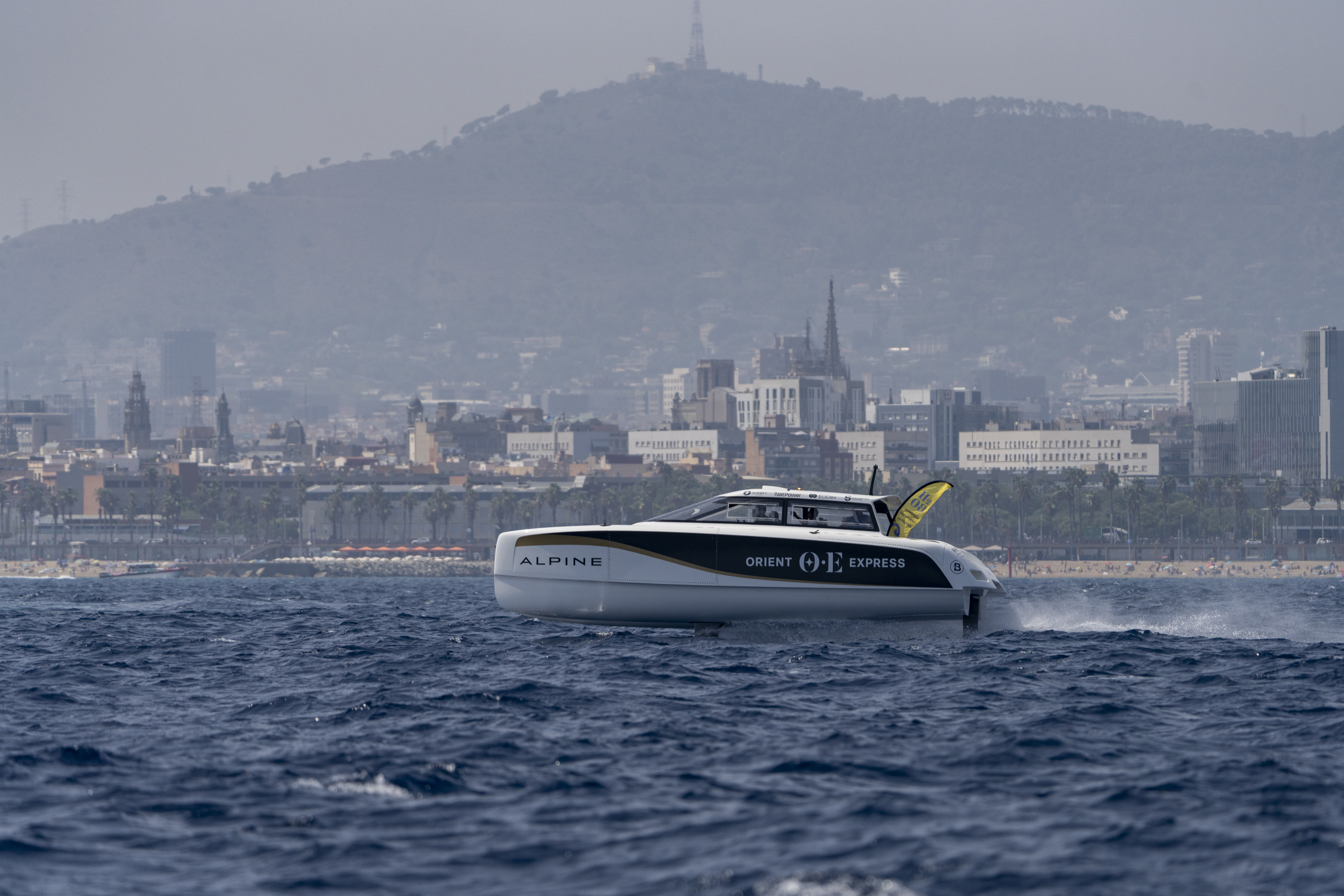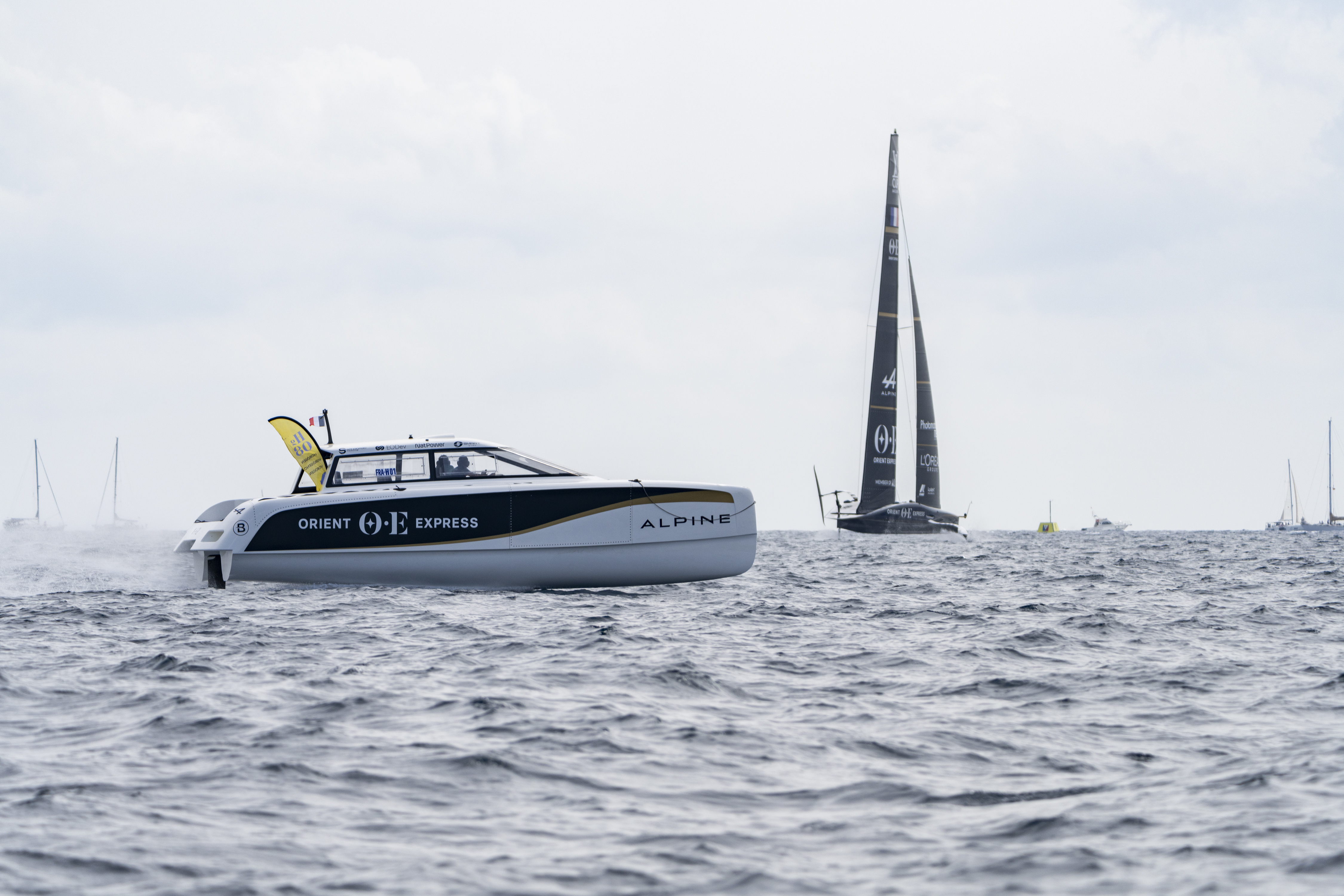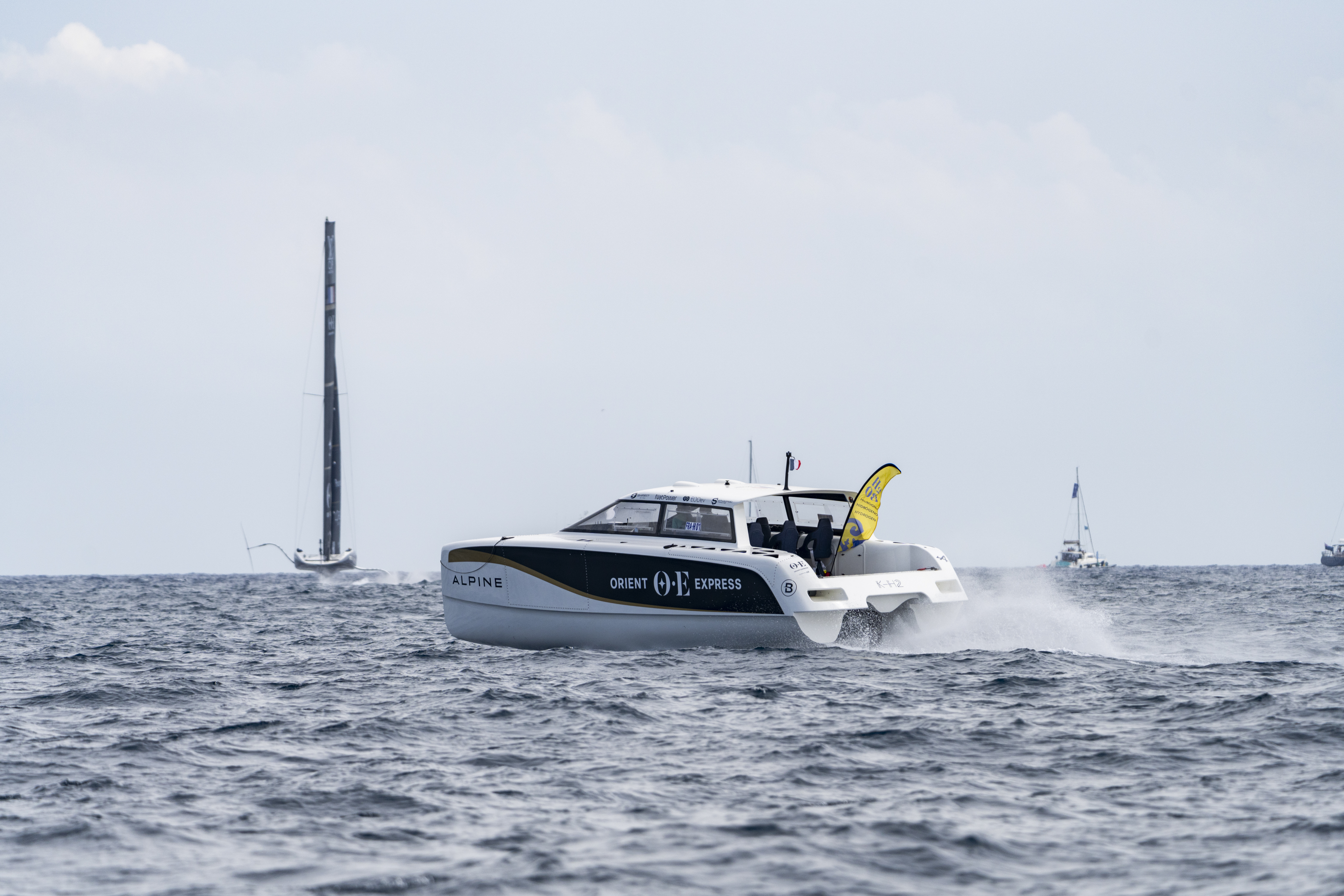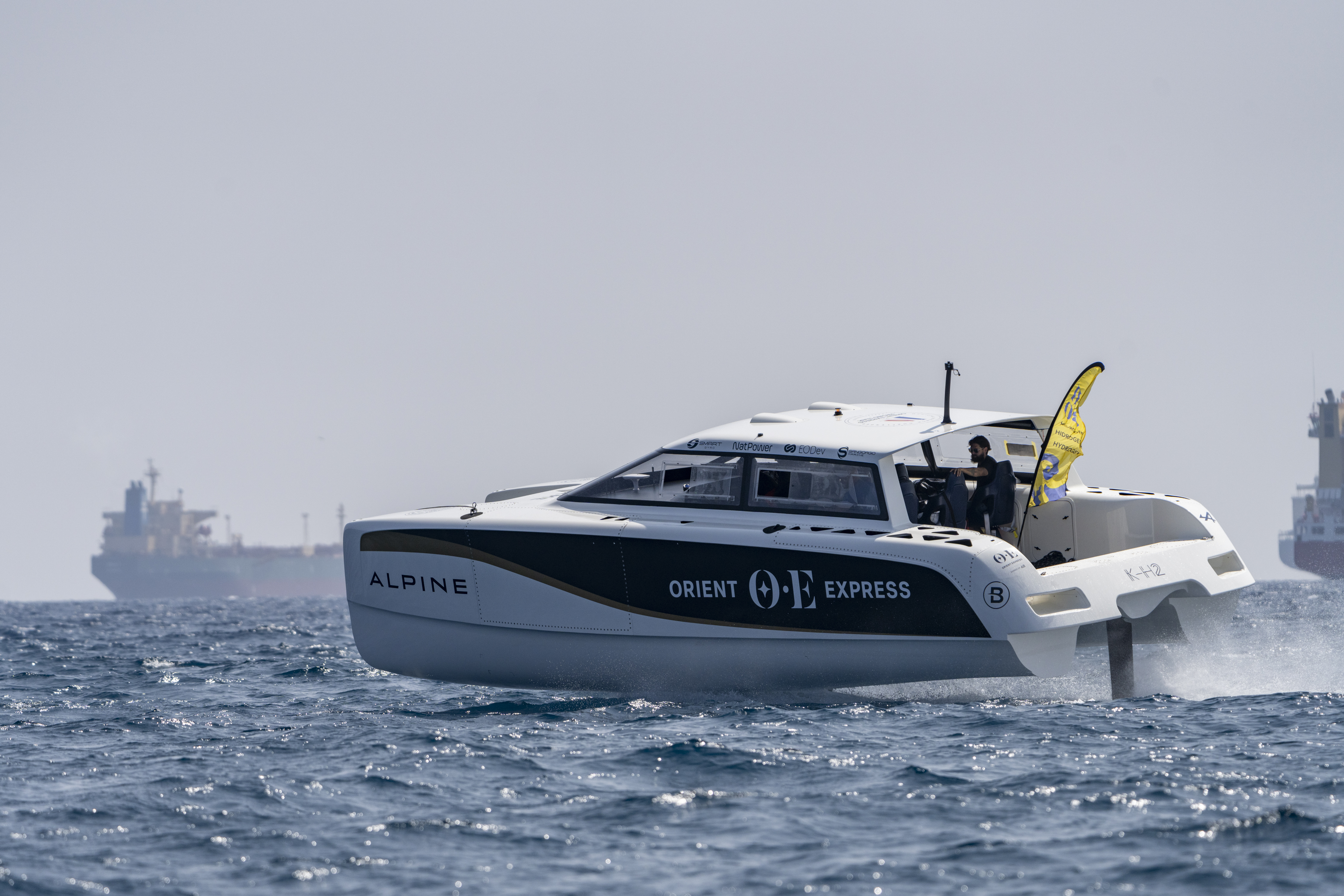K-Challenge Lab moves towards the decarbonisation of maritime transport
While the 37th America's Cup is moving towards its conclusion in Barcelona, Orient Express Racing Team has remained committed to exploring the opportunity provided by the technical challenge which had to be accepted to enter.
Along with all the teams taking part in the 2024 America's Cup, the French challenger was required to have a high-speed hydrogen foil boat (HSV) as their only authorised assistance in the race zone under the rules of the world's longest-standing sporting trophy. Having passed that test, Orient Express Racing Team is now moving ahead to create an all-green commercial motorboat variant.
As Stephan Kandler — the founder of K-Challenge which supports the French team — likes to say: "Competition makes you smarter." Alongside the intensive sailing the HSV requirement provided a chance of real innovation.
Kandler said: "The first HSV served as a laboratory for developing version 2, which is dedicated to the commercial market for coastal motorboats under 30 metres. The new model will be presented at the United Nations Ocean Conference in Nice in June 2025.
"Our project has the support of the French Secretary of State for the Sea, following the signature of an R&D partnership agreement that will enable the widespread use of the technological elements of the hydrogen boat as part of the France Mer 2030 initiative."
Each America's Cup competitor had to have at least one foiling boat, powered by 160 kW hydrogen fuel cells, capable of maintaining 30 knots cruising speed for a minimum of 150 nautical miles, while reaching a maximum speed of 50 knots for more than one hour of sailing during the day.
K-Challenge, via its subsidiary K-Challenge Lab, accepted the technological challenge alongside a European consortium to develop a 33-foot (10-metre) hydrogen catamaran flying on hydrofoils imagined and designed by French architect Philippe Briand, powered by two REXH2® fuel cells coupled to three 63 kWh batteries from hydrogen specialist EODev, and built by the Italian shipyard Bluegame.
"We joined forces with a consortium that worked with experts for months to meet these very precise specifications," says Antoine Carraz, Technical Director of Orient Express Racing Team, who built the AC75 race boat and monitored construction of the hydrogen boat.
"There were several major constraints to take into account. Firstly, the need to sail for long periods at high speeds; this requires performance that boats powered solely by batteries are unable to achieve, even on foiling catamarans, because of the weight and volume taken up by the batteries. Hence the need for a combination of solutions, including a hybrid system using hydrogen.
"We also know that the shape and total surface area of the hull in contact with the water is a key factor in terms of energy efficiency. Hence the catamaran. While the drag is less on a flying boat, we mustn't forget the Archimedean take-off phase, which is very energy-intensive."
While Orient Express Racing Team awaits news of the 38th America's Cup, the technical inspiration from the 37th continues to cast its spell.




